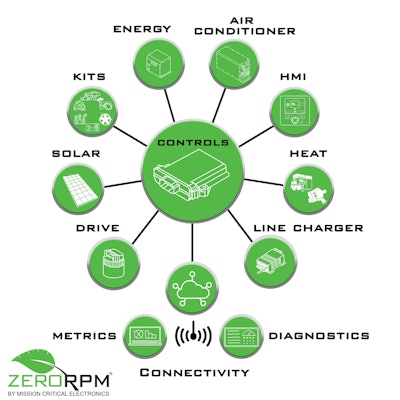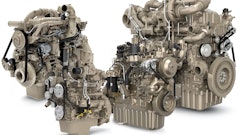
Mission Critical Electronics (MCE), a California-based designer and manufacturer of premium electrical power solutions for specialty vehicle, marine, network and industrial markets, has announced a technical and distribution partnership with ZeroRPM. ZeroRPM’s patented technology converts conventional vehicles into cost-efficient hybrid units by eliminating idling, while continuing to power all on-board equipment, including HVAC.
“We are excited to offer ZeroRPM’s patented solutions exclusively to the heavy duty truck market,” says Kevin Moschetti, CEO of Mission Critical Electronics. “The technology ZeroRPM has developed is a unique solution to an age-old problem; it creates a hybrid vehicle with lithium-ion battery technology that integrates seamlessly with a vehicle’s engine and existing electrical system, providing extended engine-off A/C and heating, plus full power to the onboard electronics, including lights, radios and computers.”
The system is available through MCE’s Xantrex, Purkeys, and Kussmaul brands.
Lance Self, CEO of ZeroRPM says, “The Mission Critical Electronics family of companies represents the best of brand in their respective space, and ZeroRPM is excited to leverage this relationship to better serve our customers and expand our brand promise to end idling.”
The ZeroRPM System offers hands-free control: once a vehicle is in park, the system automatically shuts down the engine and provides all required power utilizing lithium-ion batteries with a 5-year warranty. For extended times of stationary use of the vehicle, the ZeroRPM System manages the engine start/stop to recharge the batteries as needed.
The benefits of ZeroRPM’s no-idle alternative include reduced emissions, lower fuel consumption, reduced operating costs, extended OEM warranty periods (based on fewer engine hours), improved operator safety and comfort, all while eliminating engine noise from constant idling.
The ZeroRPM System captures all the data associated with the engine off-technology – utilizing Intellimetrics software to give users detailed insight into how the system performs. A secure portal provides customized reports and graphs of fuel savings, emissions reduction, and vehicle usage.



















